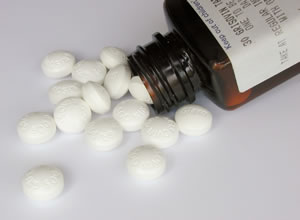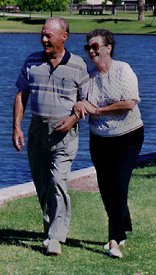Non Surgical Treatments
Aside from surgery, the options for treatment include
Almost every case:
Medications
Physical Therapy
Selected cases:
Epidural Injections (cortisone near the nerves)
Spinal Stimulator (when surgery not an option)
Medications
The types of medications include:
Anti-inflammatories (like Motrin/Advil, Naprosyn/Aleve, Voltaren, Lodine, Mobic, Relafen, Celebrex)
Pain pills (Ultram, Norco, Vicodin, Lorcet, Percocet)
Muscle relaxers* (Soma, Flexeril, Skelaxin)
Steroids (Prednisone, Medrol Dose Pack)
Pain Patch (Duragesic, used on occasion)
Local Anesthesia Patches (Lidoderm, Lenza patches)
*Mainly only for short term use.

Physical Therapy
For home exercise program suggestions,
Click here for lumbar (low back) exercises.
Click here for cervical (neck) information.
Physical therapy refers to the use of exercises and physical activities to help condition muscles and restore strength and movement. Usually, due to the painful condition, muscles need rehabilitation.
The rehab program includes building strength, flexibility and endurance, learning proper biomechanics (eg posture) for spine stability and injury prevention. There are two types of treatments, active and passive. Active treatments that the patient does themself, with their own muscle power. Passive treatments are those that are done to the patient, with no effort by the patient other than to try to relax.
Generally, active treatments give longer lasting results.
Active treatment includes therapeutic exercise such as floor exercise, exercise on special equipment and aquatic therapy. For most spinal problems, the focus is on maintaining range of motion with gentle stretching, but more prolonged benefits can be achieved by active exercise program focusing on the postural muscles.
Therapeutic Exercise
Therapeutic ExerciseTherapeutic exercise can benefit anyone. Exercise builds strength, improves balance and coordination, improves sleep, increases flexibility, revs-up the cardiovascular system, tones muscles, and relieves musculoskeletal stiffness, fatigue and pain. The physical therapist will customize a program to meet the patient’s individual needs.
Prior exercise, a period of warm up can be very beneficial. Warming up the body can be achieved by walking on a treadmill or stationary cycling.
Click here for information on Passive treatments include orthopaedic manipulation, electrical stimulation, myofascial release, ultrasound and heat/ice

Injections
Another option for treatment, the epidural injection, is not as invasive as an operation, but remain a next step in conservative care. This treatment, usually done with x-ray guidance, must be done carefully since the procedure involves placing a needle near major nerve structures. Also, if the pain seems to be generated from the facet joints in the back part of the spine, facet injections could also be helpful.
A carefully designed rehab program can be of great benefit.
At Orthopaedic Associates, our physical therapy unit has treatment options available to help alleviate your symptoms.
